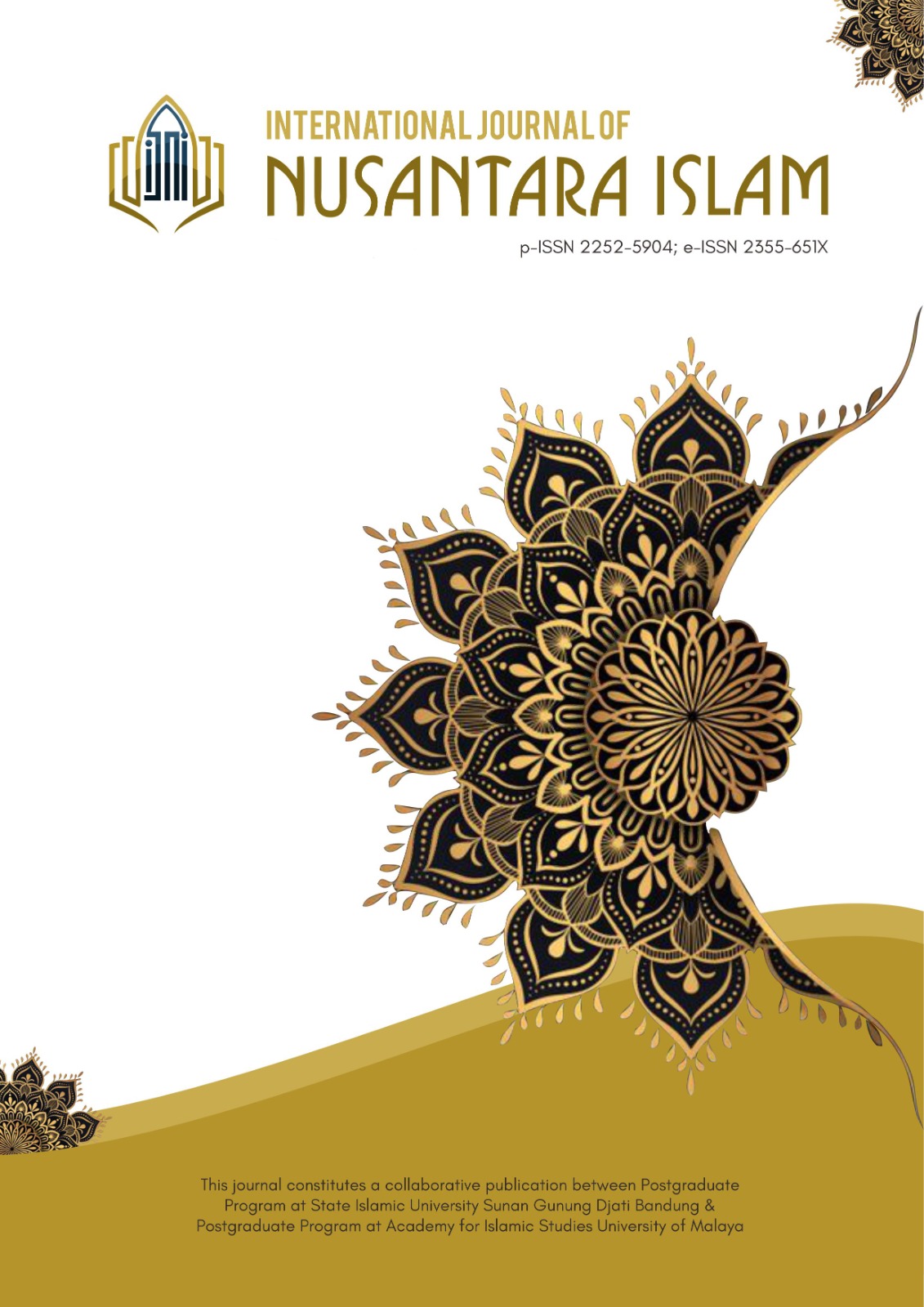The Influence of Work Motivation and the Work Environment on Employee Performance in Faculty Agriculture University North Sumatra
Main Article Content
Abstract
Article Details
The Authors submitting a manuscript do so on the understanding that if accepted for publication, copyright of the article shall be assigned to International Journal of Nusantara Islam, Sunan Gunung Djati State Islamic University.
The copyright encompasses exclusive rights to reproduce and disseminate articles in all forms and media, including reprints, photographs, microfilm, and similar reproductions, as well as translations. Some or all of the contents of this journal can be stored in databases and transmitted in any form and media without the need for written permission from the International Journal of Nusantara Islam, Sunan Gunung Djati State Islamic University.
The Editors and the Advisory International Editorial Board make every effort to ensure that no wrong or misleading data, opinions or statements be published in the journal. In any way, the contents of the articles and advertisements published in the International Journal of Nusantara Islam (IJNI) are sole and exclusive responsibility of their respective authors and advertisers.
References
Anoraga. (2014). Psikologi Kerja. Rineka Cipta.
Arikunto, S. (2005). Prosedur Penelitian Suatu Pendekatan Praktek. PT Rineka Cipta.
Arikunto, S. (2006). Metode Penelitian Kualitatif. Bumi Aksara.
Chukwuma, & Obiefuna. (2014). Effect of Motivation on Employee Productivity: A Study of Manufacturing Companies in Nnewi. Journal of Managerial Studies and Research, 7(2).
Gibson. (2015). Organisasi dan Manajemen, Perilaku, Struktur, dan proses (J. Wahid, Penerj.). Erlangga.
Hadi, S. (2014). Metodologi Research 2. Andi Offset.
Hanaysha. (2016). Testing The Effects of Food Quality, Price Fairness and Phisical Environment on Customer Satisfaction in Fast Food Restaurant Industry. Journal of Asian Business Strategy, Vol. 6 Issue.2(Issue 2), 31–40.
Henry, S. (2015). Manajemen Sumber Daya Manusia. STIEY.
Kasmir. (2016). Aplikasi Analisis Multivariate dengan Program IBM SPSS19. Badan Penerbit Universitas Diponegoro.
Kasmir. (2018). Manajemen Sumber Daya Manusia (Teori dan Praktik). PT Raja Grafindo Persada.
Mangkunegara. (2015). Evaluasi Kinerja SDM. Refika Aditama.
Munandar. (2011). Psikologi Industri dan Organisasi. UI Press.
Rivai. (2010). Performance Appraisal, sistem yang tepat untuk menilai kinerja karyawan dan meningkatkan daya saing perusahaan. PT Raja Grafindo Persada.
Rusiadi, Subiantoro, Nur, & Muhammad. (2016). Metode Penelitian: Manajemen, Akuntansi dan Ekonomi Pembangunan. Konsep, Kasus dan Aplikasi SPSS, Eviews, Amos, Lisrel. USU Press.
Sedarmayanti. (2011). Manajemen Sumber Daya Manusia, Reformasi Birokrasi Manajemen Pegawai Negeri Sipil. Rafika Aditama.
Sondang, P. S. (2012). Manajemen Sumber Daya Manusia. Bumi Aksara.
Sugiyono. (2010). Metode Penelitian Pendidikan Pendekatan Kuantitatif, kualitatif, dan R&D. Alfabeta.
Wibowo. (2011). Manajemen Kinerja. Rajawali Press.
Wirawan. (2013). Evaluasi Kinerja Sumber Daya Manusia. Salemba Empat.

